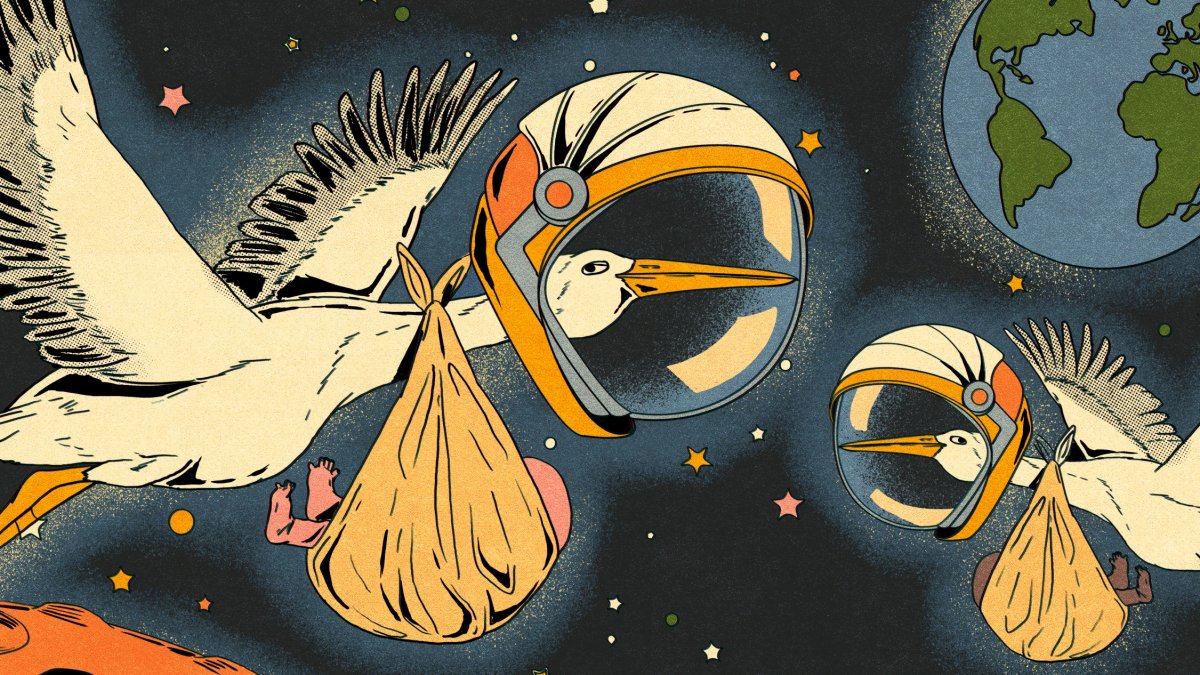Egbert Edelbroek was making a sperm donation when he first wondered whether it was possible to have children in space. The Dutch entrepreneur thought about the different uses of donated sperm and wondered whether in vitro fertilization (IVF) might also be possible beyond Earth – or whether it could even be improved under the conditions there. Would eggs perhaps be easier to fertilize in the weightlessness of space than in a laboratory dish on Earth? The Dutchman turned the idea into a business. Today, Edelbroek is CEO of SpaceBorn United, a biotech startup that aims to pioneer research into human reproduction off-planet. As early as 2024, he wants to send a mini laboratory on a rocket into low Earth orbit, where IVF will then take place. If this succeeds, Edelbroek hopes that his pioneering work could help with future space colonization, because they could really use offspring on the go.
Advertisement
“Humanity needs a backup plan,” he says. “If you want to be a sustainable species, you have to be a multiplanetary species.” Beyond future space colonies, there is also a general pressing need to understand the impact of space on the human reproductive system. So far, no one has become pregnant in space. But with the rise of space tourism, it is likely that this will happen one day. Edelbroek thinks we should be prepared for this. Despite the growing interest in space exploration and colonization, sparked in part by billionaires like Elon Musk and Jeff Bezos, we still know very little about what happens to our reproductive biology in orbit. A report published in September by the US National Academies of Science, Engineering, and Medicine shows this again. It says our understanding of how space environments influence reproduction is crucial to its long-term study. “But it has largely not been investigated yet.”
Some studies on animals have shown that the various phases of reproduction – from mating and fertilization through the development of the embryo to implantation, pregnancy and birth – can occur normally in space. For example, in the first-ever experiment of its kind, eight Japanese medaka fish developed from egg to hatch aboard the space shuttle Columbia in 1994. All eight survived the return to Earth and appeared to behave normally. However, other studies have found evidence of possible problems. Pregnant rats that spent much of their third trimester of pregnancy – a total of five days – on a Soviet satellite in 1983 experienced complications during labor and birth. Like all astronauts returning to Earth, the rats were physically exhausted and weakened. Their labors took longer than usual, probably because of atrophied uterine muscles. Worse, all of the kittens in a litter died during birth, due to an obstruction thought to be due in part to the mother’s weakened condition.
Step by step to becoming a space baby
For Edelbroek, these inconclusive results point to the need to systematically look at each step of the reproductive process in isolation to better understand how it is affected by conditions such as lower gravity and higher radiation exposure. The mini laboratory developed by his company is designed to do just that. It’s about the size of a shoebox and uses microfluidics technology to connect a chamber containing sperm to a chamber containing eggs. It can also rotate at different speeds to replicate the gravity environment of the Earth, Moon or Mars. The system is compact enough to fit into a small space capsule that can be placed on a rocket and launched into space.
After the egg is fertilized in the device, it divides into two cells, each of which divides again to form four cells – and so on. After five to six days, the embryo reaches a stage called a blastocyst, which looks like a hollow sphere. At this point, the embryos are then cryogenically frozen in the mini-lab in space so that they can return to Earth. But first SpaceBorn has to prove that the device actually works in space. Edelbroek’s plans for this test were presented at the SXSW festival in March this year. “We have completed our first prototype and it will board a rocket later this year – within six months,” he told an audience.
However, that turned out to be too optimistic. During a Zoom meeting of SpaceBorn United’s scientific advisory board in August, Edelbroek explained that a company hired to carry out the rocket launch in Iceland did not yet have the necessary permits. Edelbroek therefore decided to cancel the suborbital test and is now aiming for a higher goal – a three-hour orbital test of the device in collaboration with the German start-up Atmos Space Cargo, which is currently planned for November 2024.
If this test succeeds, SpaceBorn United plans further test flights under a mission plan called ARTIS (“Assisted Reproductive Technology in Space”). As described on the company’s website, the first missions will fertilize rodent embryos in space under simulated gravity equivalent to that on Earth. The embryos formed in space and cryogenically frozen for return to Earth are then implanted into a rodent mother. If this results in the birth of healthy young, subsequent ARTIS missions will also use human embryos fertilized under Earth-like gravity and eventually partial gravity similar to that on the Moon or Mars.
If these experiments show that human embryos can develop under these conditions, Edelbroek believes it would be a major step forward toward proving the feasibility of multigenerational settlements in space. “I think we definitely need this kind of research,” comments Kelly Weinersmith, a biologist and co-author of a forthcoming book on space settlements called “A City on Mars.” “I think it’s worth making humans a multiplanetary species, as a plan B, so to speak,” she says. But she also thinks that this needs to be done slowly.
To home page
